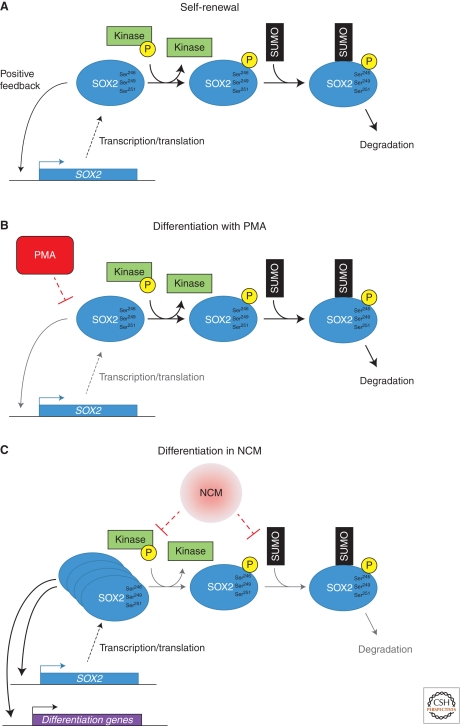Figure 3.
Schematic of the effects of phosphorylation and subsequent SUMOylation of SOX2 in self-renewing and differentiating pluripotent stem cells. The results from the study by Rigbolt et al. (2011) and our own data (Van Hoof et al. 2009; and the unpublished results of Fig. 1) imply that there is a fine balance between the transcription/translation and degradation rates of SOX2 to sustain self-renewal (A). If the transcription/translation feedback loop is disturbed by, e.g., PMA, the continuous phosphorylation, the subsequent SUMOylation, and the eventual degradation of the remaining SOX2 proteins lead to a steady decrease in SOX2 levels, resulting in a shift toward differentiation (B). On the other hand, if the intracellular levels of SOX2 increase owing to a decrease in the degradation rate, the cells will also differentiate as a result of the transcription/translation of differentiation-associated genes (C). The dotted lines indicate that the precise action and targets of these differentiation-inducing conditions are not known. Abbreviations: PMA, phorbol 12-myristate 13-acetate; NCM, non-conditioned medium.

